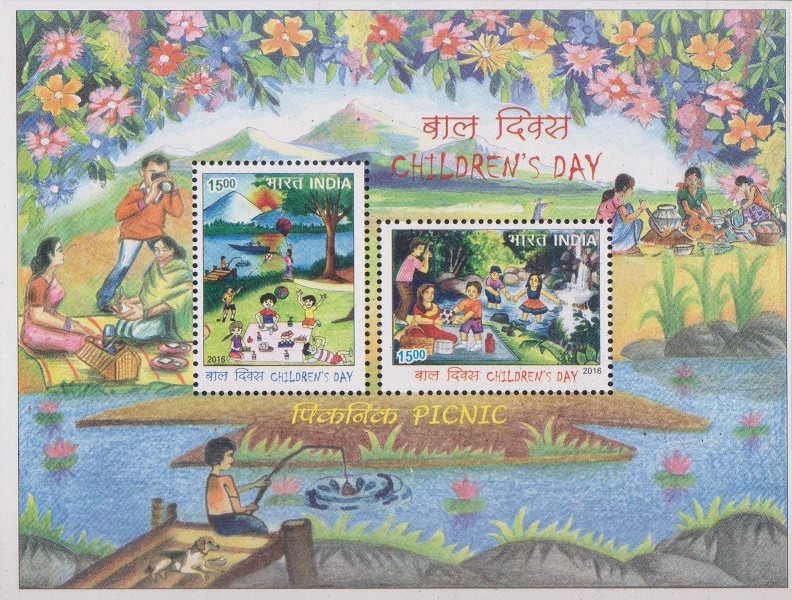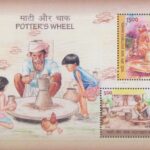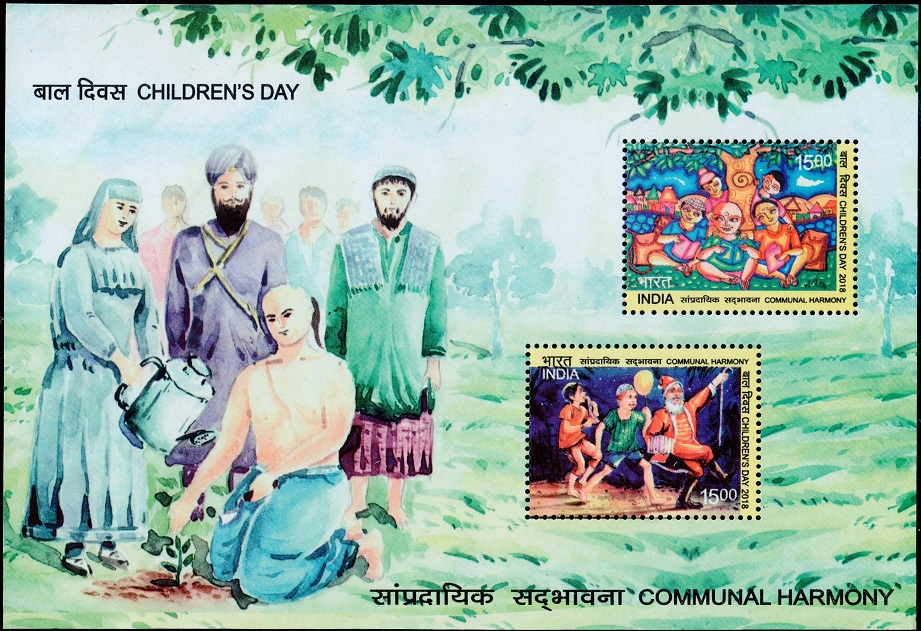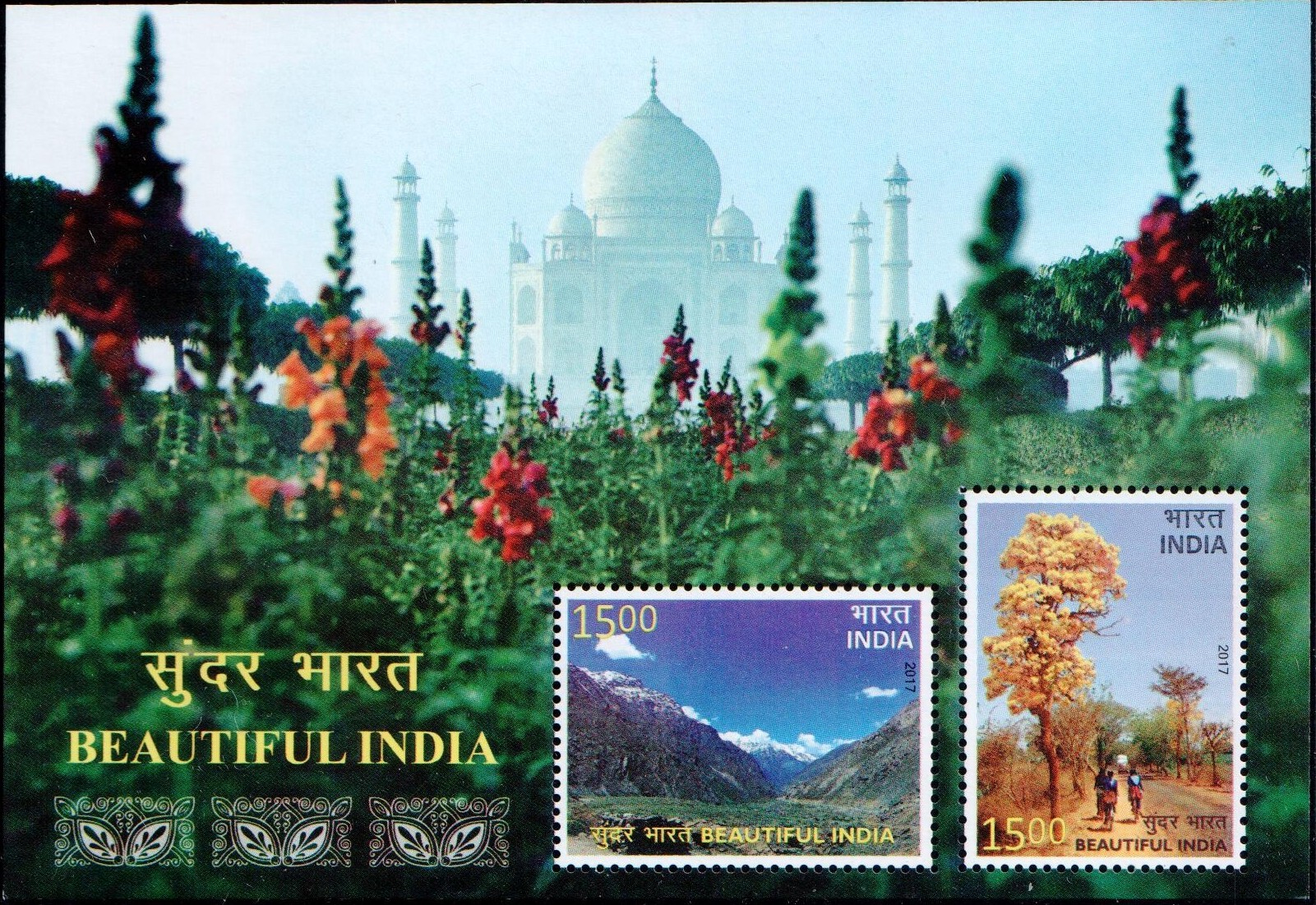
India on Children’s Day 2016
A Miniature Sheet consisting of 2 nos. of postage stamp on the Picnic :


 Issued by India
Issued by India
Issued on Nov 14, 2016
Issued for : The Department of Posts organized a nation-wide competition inviting entries for designing the Commemorative Postage Stamps, Miniature Sheet, First Day Cover and Brochure on the theme “Picnic”. Based on selected entries two Stamps, a Miniature Sheet, First Day Cover and Brochure, on the theme “Picnic”, are being released. The designs on the Stamps, Miniature Sheet, First Day Cover & Brochure are based on the entries submitted by Mr. Gauravdev HB, Ms. Sukanya Behera, Ms. Soujanya Hati, Ms. Yamini. K, Mr. Ankan Sarkar, Mr. Sat Prakash Singh, Ms. Saniya Muhammed, Ms. Pransheeta, Mr. B. N. Nivas Nag, Ms. Alisha Raghav, Ms. Supriya Prasanna Tendulkar, Ms. Arishma Saifi and Ms. Pahul Preet Kaur.
Type : Miniature Sheet, Mint Condition
Colour : Multi Colour
Denomination : 1500 Paise each
Stamps Printed : 205110 each
Miniature Sheet Printed : 0.1 million
Printing Process : Wet Offset
Printer : Security Printing Press, Hyderabad
About :
- Picnics, tours, trips and excursions are part and parcel of our life. They provide us complete opportunities to study the book of Nature as Shakespeare says, “We find sermons in stones, tongues, in trees and books in running brooks”. “Picnic” conjures up a picture of freedom from our daily routine, from the chaos of urban life and from the confines of the concrete jungle. It provides an imagery of fun with family and friends, children playing, laughing, chasing a butterfly and their parents soaking up the atmosphere of happiness, however transient. Humankind has evolved in the lap of nature and the urge to reconnect with the soothing greenery is only natural. Descriptions of picnics show that the idea of a meal that was jointly contributed and was enjoyed out-of-doors was essential to a picnic from the early 19th century.
- The Oxford English Dictionary says that the word “picnic” originally referred to fashionable social entertainment in which each person contributed a share of the provisions, and says that the first recorded use of “picnic” in English appears in 1748 in a letter from Lord Chesterfield to his son, in the sense of an assembly or social gathering. A subsequent mention occurs in a letter from Lady M. Coke to Lady Stafford in 1763 from Hanover. Gustaf Palmfelt, a Swede, in a 1738 translation into Swedish used “picnick” (in the sense of an assembly); Swedish continues to use “picnick” and suggests that it is of French or English origin. Larousse Gastronomique states that ‘picnic’ is a contraction of pique (to pick), piquante (sharp or pungent), and nique (of small value). This suggestion seems commonsensical, but it is guesswork based on the technique of word formation by clipping words together to form a new word.
- In the arts and literature, picnics tend to be more concerned with place, action, and figurative meanings and less concerned with food, if it is mentioned at all. Oliver Goldsmith, whom Georgina Battiscombe (English Picnics, 1949) credits with describing the first picnic in English literature in The Vicar of Wakefield (1766) provides these bare bones: “Our family dined in the field, and we sat, or rather, reclined round a temperate repast, our cloth spread upon the hay.” Battiscombe insists that a picnic must be a meal eaten outdoors to which diners bring something to eat, even if there is no sharing. She suggests that before the Romantics made nature fashionable “no one connected the idea of pleasure with the notion of a meal eaten anywhere but under a roof”.
- In London, the so-called Picnic Society (1802) was a short-lived elite social club organized for entertainment. But a decade later “picnic” is used only in the sense of a meal eaten outdoors. However, the idea of picnic is universal, and finds expression in different languages across the world. For example, Italians use scampagnata (holiday in the country), or lolazione Sull’erba (luncheon on the grass). Spaniards use comida al aire libre (luncheon on the grass), or comida campestre (eat in the country). Spanish dictionaries seem unaware that Ménage thinks the word may be of Spanish origin. Koreans use both the Chinese so pong (a little meal in the country) and “picnic”. Their favorite picnic time occurs when the cherry trees are in bloom. The Japanese have a long history of depicting meals taken outdoors, often celebrating hanami, the cherry blossom season, or another seasonal event. In 1862, “picnic” was translated as shokuji (meal), and in the twentieth century, the Japanese adopted the loanword pikunikku.
- Picnics are often family-oriented or a large get-together such as company picnics, school picnics, etc. Picnics add spice to our life. They refresh out tired nerves. Picnics give students a temporary relief from their studies. After enjoying a picnic, they feel fresh and take up their studies with renewed vigour. Every school and college arranges picnics for its students. Outdoor games or some other form of entertainment are common at large picnics. In established public parks, a picnic area generally includes picnic tables and possibly other items related to eating outdoors, such as built-in grills, water faucets, garbage containers, and restrooms. Some picnics are a potluck, an entertainment at which each person contributed some dish to a common table for all to share.
- Picnic is inseparable from nature, and preserving our ecosystem is critical to preserve the tradition of outdoor eating, playing or any other outdoor activity, especially if it involves children. With increase of urbanisation, such spots of untainted greenery where a clear stream hustles past is becoming rare sight. It therefore becomes important that we work towards conservation of nature so that our future generation is able to enjoy their simple pleasures.
- Text : Based on material available on the internet.







